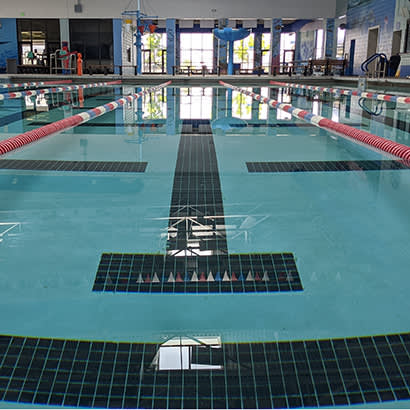
For an enhanced digital experience, read this story in the ezine.
Imagine walking into a pool facility and being greeted by employees with a smile and the statement, “Welcome to our facility.” You pay the fee and are then directed one way to the men’s locker room and the other way to the women’s. You pick a gender and enter a large open space where there are open showers, a couple of occupied changing rooms, and naked people everywhere. You quickly make your way into the nearest toilet stall to regroup and remind yourself to breathe. As you maneuver around a two-foot by four-foot space, you hit both funny bones on the wall and the toilet roll dispenser. You take off your clothes and replace them with “appropriate swim attire.” Next, you step out into the world, half naked, and enter a body of water that will have a physical effect (albeit temporary) on your body.
You are having a great time, right? Well, maybe, some of you are. How do we turn “some” into “all?” How do we create more inclusive environments where everyone feels welcomed, included and accepted?
A Change of Heart
Change requires keeping an open mind, educating yourself, having empathy toward others, being brave enough to ask questions, having the ability to teach others, and embracing change when necessary. That change could be an adjustment in perspective; a change of culture, including language; or a structural change in the environment.
How do you put change into practice? First, changing your perspective is basically thinking or doing something differently. This can be easier said than done, at times, but there are a few easy steps to help you get started: reframe your thoughts, think more globally, and take a proactive and positive approach.
Once others see and experience the change in you, they are more likely to open up and create change in their own lives. Remember the saying, “People may not remember your words, but they will remember how you made them feel.” Meeting the needs of our increasingly diverse population can seem challenging. We need people who are willing to lead in new and more inclusive ways. These leaders exhibit six core traits: curiosity, cultural intelligence, collaboration, commitment, cognizance and courage. Actively and consistently demonstrating these traits often requires purposeful shifts in behaviors and mindsets.
The Power of Language
Language is our primary tool to communicate the values, beliefs and practices of a culture. Using gender-neutral or gender-inclusive language is one way to avoid bias toward a particular sex or gender and helps to demonstrate inclusive behaviors.
For example, let’s go back to the lobby of the aquatics facility. Imagine what a different experience patrons would have if the directions to the locker room were, “Down this hall are our gender-neutral facilities. You are welcome to use whatever space you choose.” Using this type of inclusive language is a powerful way to promote gender equality, eradicate gender bias, and create an inclusive culture for patrons as well as employees.
A Change of Scenery
How a facility is structured should be welcoming to all gender identities. That includes, but is not limited to, restrooms, showers, locker rooms and changing rooms. Public spaces need to be fully accessible, both physically and socially, while being inclusive of everyone. All patrons have the right to feel safe and welcomed, and to experience a sense of belonging in any public space, regardless of their socioeconomic backgrounds and self-identities. Creating an environment that embraces this experience takes time, planning and money.
Welcomed Change
It starts with you. Create a culture where everyone feels welcomed and included. Partner with local LGBTQIA+ groups and organizations. Recruit diverse professionals. Make room at the decision-making table and hear everyone’s voice. Include various perspectives. Know your coworkers and patrons. Know those you are not serving and find out why they don’t attend your programs or visit your facilities. The process is rewarding and necessary.
Shannon L. Harris, CPRE, CPO, is Director of Carson Valley Swim Center.

